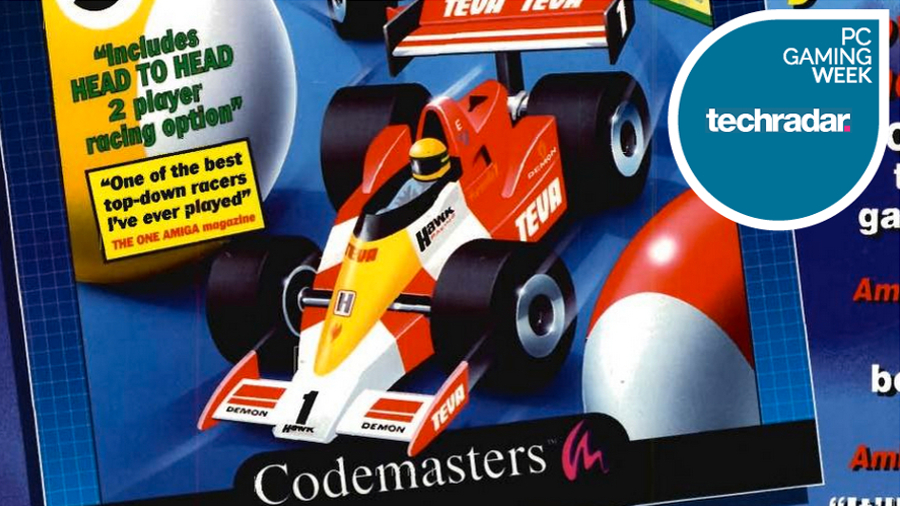Why Micro Machines was a multiplayer miracle for racing fans
Local multiplayer was huge in 1993

Micro Machines started life as a top-down racer the SNES before being ported to the Amiga. Developed by the Codemasters, the team most famed for the the Dizzy series, it was a a hit thanks to its competitive high-speed gameplay, solid controls and, as Amiga Power noted in the original 1993 review below, its unbelievably addictive multiplayer mode.
Micro Machines
- Publisher: Code Masters
- Authors: In house
- Price: £25.99 (around $38)
- Release: September 1993
Great Extremely Small Things In History: 1) The Microchip. 2) McCain Micro Chips. 3) Keyhole microsurgery. 4) Microgrooves ('the fine groove of long-playing gramophone records', according to our dictionary). 5) Spotted the link yet?
Yes, that's right, they're all words I picked randomly from the page of the aforementioned dictionary with 'micro-' printed at the top of it. What do you want, a medal or something?
Er, anyway. Here's Micro Machines. As anyone with any sense was expecting, it's great. Not for any particularly revolutionary or exciting reason, but simply because it's a wonderful game. Or, perhaps, because it's a simply wonderful game. Or even because it's a wonderful game, simply. Yes, I think that's it.
I was talking to a few of my glamorous international game-playing chums the other day (well, a couple of part-time freelance writers for console magazines, anyway) and while we argued bitterly about the merits of Kick Off, Asteroids, Epic, Rainbow Islands and International Rugby Challenge, there's one thing we all agreed on, and that was that without exception, the best games in the world are the ones where something's done simply.

Micro Machines is a Super Sprint-type overhead view circuit racing game, dressed up a bit with some unusual backgrounds but with no shocking gameplay innovations beyond a fairly novel two-player mode.
It's technically nothing clever, either – the game originated on the 8-bit NES, and it's only been updated in the graphics department since then, and even there not as much as you might expect. And annoyingly, the Amiga lags behind the Mega Drive version in a couple of technical aspects, like the lack of a parallax scrolling floor beneath the table-top levels and some missing graphical details on a couple of the stages.
Sign up for breaking news, reviews, opinion, top tech deals, and more.
Moving on
But who cares, eh? On with the old tosh. Micro Machines features 24 courses over eight different types of scenery (plus a set of bonus races which you get to play every time you win three races, where you can get some extra lives), through which you race against a variable selection from the game's 11 variably skilled drivers.
You can race in four amusingly different ways – one-player challenge mode (you take on three computer players at a time, gradually eliminating them and choosing new opponents as you go on, until you're the only one left), one-player head-to-head mode (where you race against a single computer opponent in a manner I'll describe slightly later in the review), or two-player head-to-head or tournament modes, which are basically the same except one takes place on a set sequence of courses and the other lets you do single races on the course of your choice.
These last three modes are where most of the appeal of Micro Machines lies – the straight one-player game is alright, but it suffers from an unfortunate difficulty curve (it's pretty damn easy right the way through to the 15th or so course, which is one set on a number of school desks joined together by ruler bridges, and is so teeth-grindingly difficult that, having spent the best part of an hour doing the 14 previous courses only to lose all your lives on this one and get sent right back to the start, you'll probably melt down your game disk into an ashtray and never want to play it again – not that you'd be able to by then anyway, of course) and without any kind of password or save system there's just no way back in. Head-to-head mode, though, is a laugh riot and no mistake.
